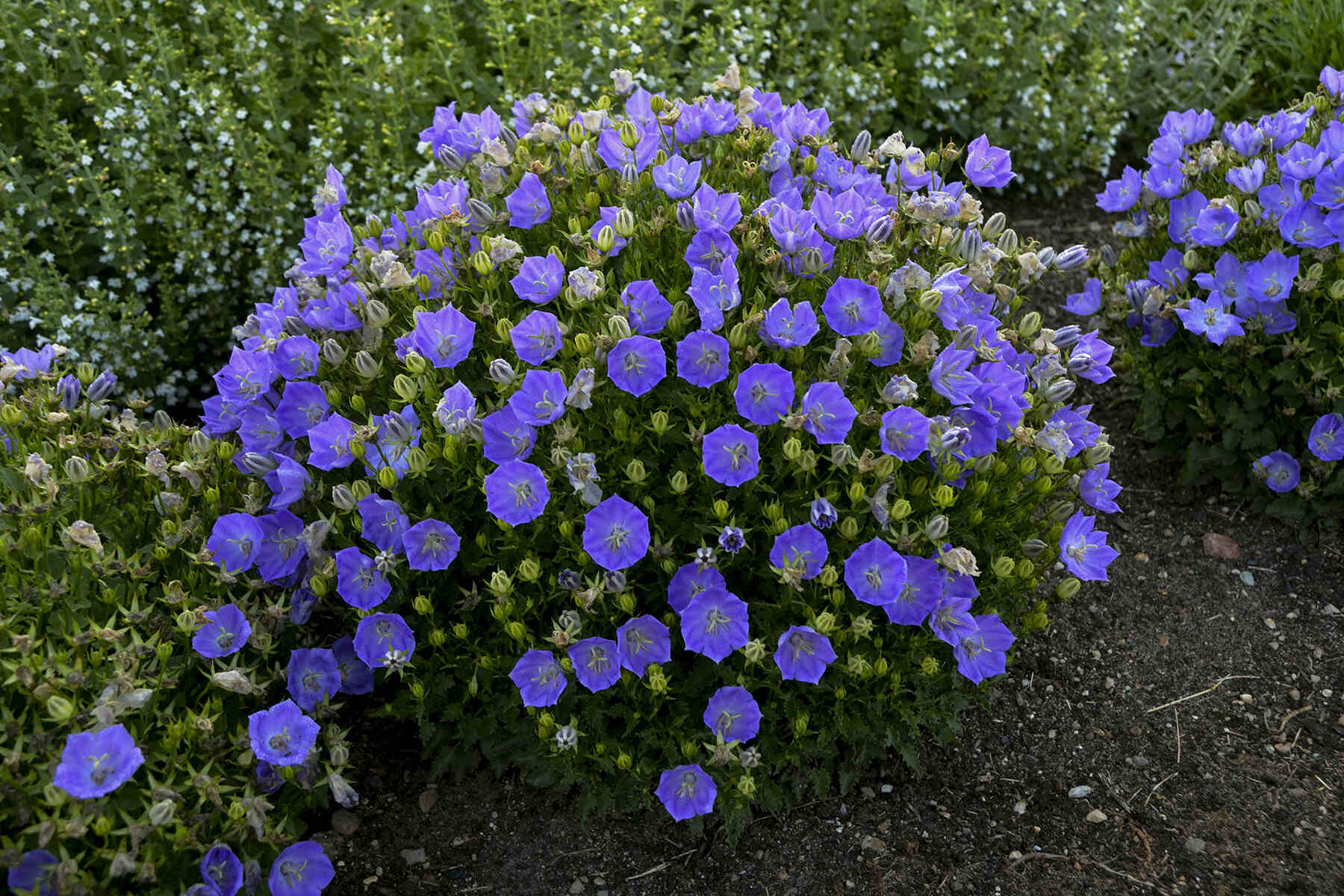
What is the Carpathian harebell? This delicate flower, known scientifically as Campanula carpatica, is a perennial plant native to the Carpathian Mountains. Why is it special? Its bell-shaped, blue or white blooms add a touch of elegance to gardens and wild landscapes alike. Where can you find it? Besides its native range, gardeners worldwide cultivate it for its beauty and resilience. How does it grow? Thriving in well-drained soil and full sun, this plant can reach up to 12 inches in height. Why should you care? The Carpathian harebell not only enhances garden aesthetics but also supports local pollinators like bees and butterflies. Want to know more? Read on to discover 25 fascinating facts about this charming flower.
What is the Carpathian Harebell?
The Carpathian harebell, also known as Campanula carpatica, is a charming perennial plant native to the Carpathian Mountains. Known for its delicate, bell-shaped flowers, this plant adds a touch of elegance to gardens and landscapes.
-
The Carpathian harebell is native to the Carpathian Mountains, which stretch across Central and Eastern Europe.
-
It belongs to the Campanulaceae family, which includes over 500 species of flowering plants.
-
The plant's scientific name, Campanula carpatica, is derived from the Latin word "campana," meaning bell, and "carpatica," referring to its Carpathian origin.
-
Carpathian harebells typically grow to a height of 6 to 12 inches, making them perfect for rock gardens and borders.
-
The flowers are usually blue or purple, but white varieties also exist.
Growing Conditions for Carpathian Harebells
Understanding the ideal growing conditions for Carpathian harebells can help gardeners cultivate these beautiful plants successfully.
-
Carpathian harebells thrive in well-drained soil, preferring sandy or loamy textures.
-
They require full sun to partial shade, making them versatile for various garden settings.
-
These plants are drought-tolerant once established, needing minimal watering.
-
Carpathian harebells can withstand cold temperatures, making them suitable for USDA hardiness zones 3 to 8.
-
They benefit from a layer of mulch to retain moisture and regulate soil temperature.
Unique Features of Carpathian Harebells
Carpathian harebells possess several unique features that set them apart from other flowering plants.
-
The flowers have a distinctive bell shape, which attracts pollinators like bees and butterflies.
-
Each flower can last up to two weeks, providing long-lasting beauty in the garden.
-
The plant has a clumping growth habit, forming dense mounds of foliage and flowers.
-
Carpathian harebells are deer-resistant, making them a good choice for gardens in areas with high deer populations.
-
They can be grown in containers, adding versatility to their use in garden design.
Uses of Carpathian Harebells
Carpathian harebells are not only beautiful but also versatile in their uses.
-
They are often used in rock gardens, where their low-growing habit and vibrant flowers create a striking contrast with rocks and stones.
-
These plants are ideal for edging garden beds and borders, providing a neat and tidy appearance.
-
Carpathian harebells can be used in alpine gardens, where their ability to thrive in rocky, well-drained soil is an advantage.
-
They make excellent ground cover, spreading to fill in gaps and prevent weed growth.
-
The flowers can be cut and used in floral arrangements, adding a touch of elegance to indoor spaces.
Caring for Carpathian Harebells
Proper care is essential to keep Carpathian harebells healthy and thriving.
-
Deadheading spent flowers encourages continuous blooming throughout the growing season.
-
Dividing the plants every few years helps maintain their vigor and prevents overcrowding.
-
Fertilizing with a balanced, slow-release fertilizer in the spring promotes healthy growth and abundant flowering.
-
Regularly checking for pests and diseases ensures the plants remain healthy and vibrant.
-
Pruning back the foliage in late fall prepares the plants for winter and encourages new growth in the spring.
Final Thoughts on Carpathian Harebell
Carpathian harebell, with its stunning blue flowers and hardy nature, is a gem in any garden. This resilient plant thrives in rocky soils, making it perfect for rock gardens and borders. Its ability to attract pollinators like bees and butterflies adds ecological value to your garden. Plus, it’s low-maintenance, requiring minimal watering and care once established. Whether you’re a seasoned gardener or a beginner, this plant is a fantastic addition to your green space. Its beauty and durability make it a favorite among garden enthusiasts. So, if you’re looking to add a splash of color and a touch of nature’s resilience to your garden, Carpathian harebell is an excellent choice. Happy gardening!
Was this page helpful?
Our commitment to delivering trustworthy and engaging content is at the heart of what we do. Each fact on our site is contributed by real users like you, bringing a wealth of diverse insights and information. To ensure the highest standards of accuracy and reliability, our dedicated editors meticulously review each submission. This process guarantees that the facts we share are not only fascinating but also credible. Trust in our commitment to quality and authenticity as you explore and learn with us.
